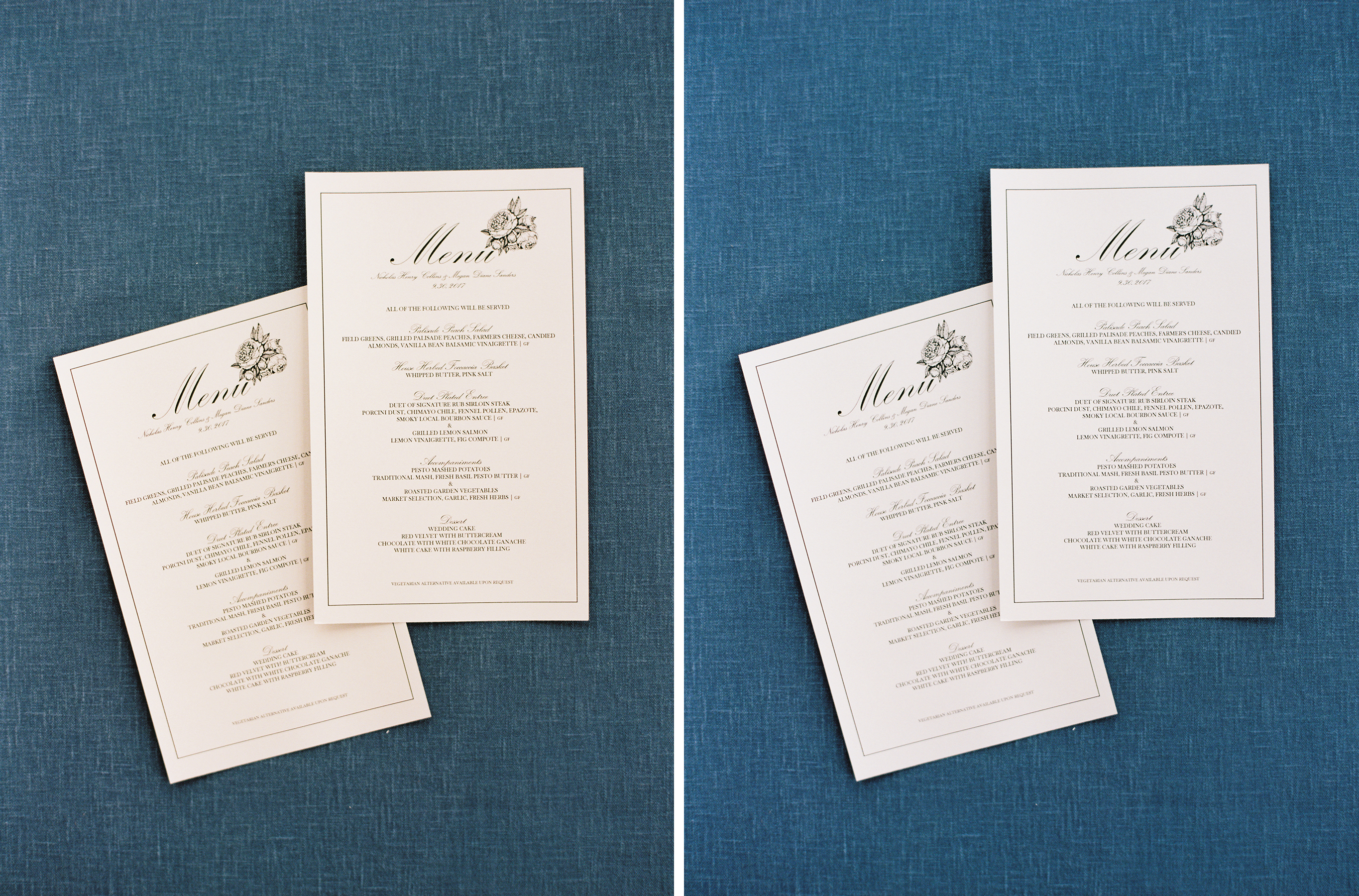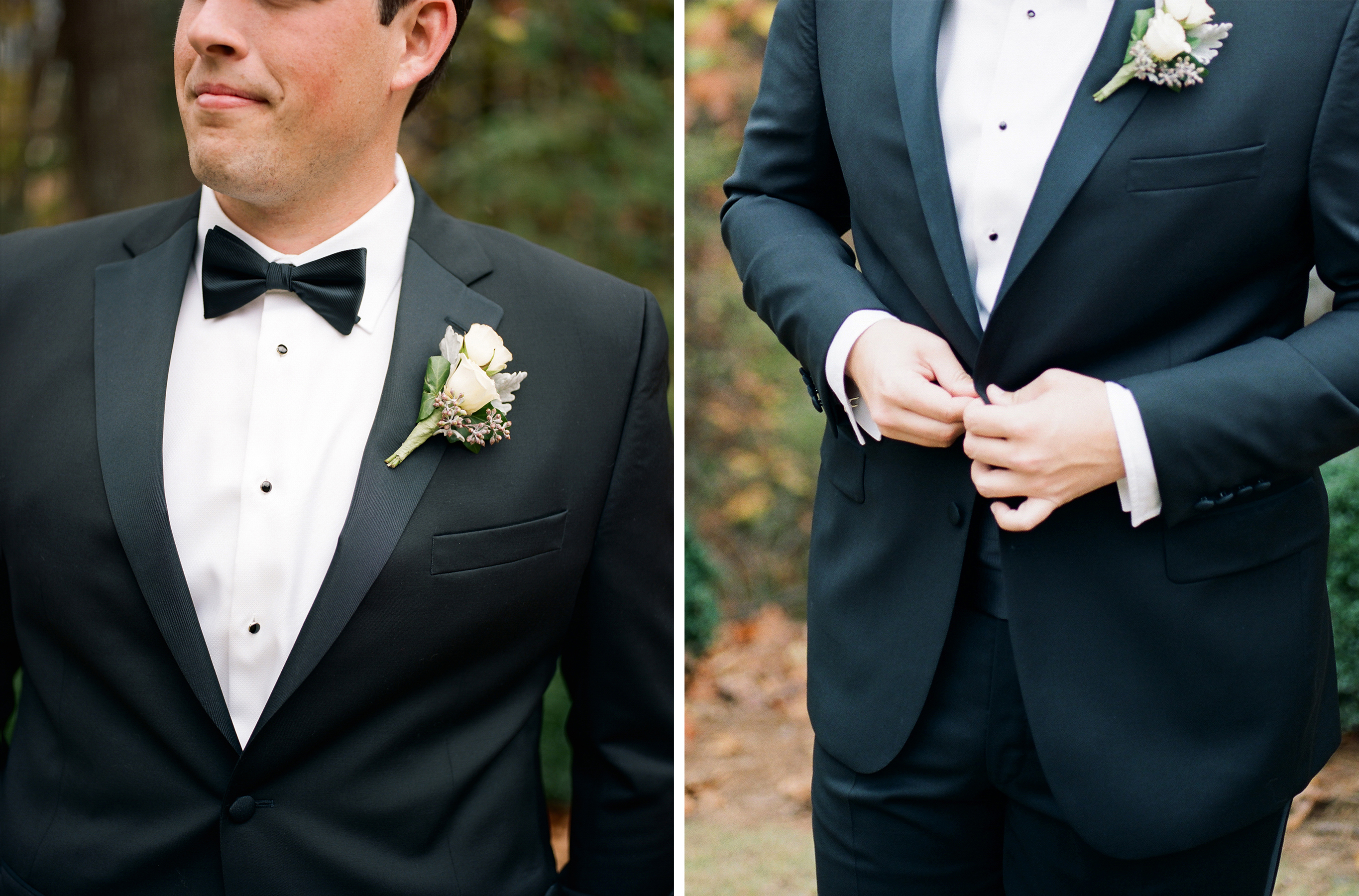One of the things we love about film is the way it renders color. Sometimes, however, the color of our film doesn’t turn out the way we expected it to, bringing to mind the blue dress/gold dress debate of 2015. There are a lot of factors that can influence color: underexposing, color reflections, shooting in different lighting scenarios, and shooting expired film or film that hasn’t been stored properly are things outside of your lab’s control that can cause color shifts. There are other instances, however, where communicating with your lab can help you achieve the color you want. Below are some examples of times where it is important to communicate with your lab about color:
Colored Backdrops- Because each film stock interprets color differently, sometimes a color can come across differently on film than it does in real life. Knowing beforehand what the true color should be can help the technician or editor give you a better scan. In the example below, it was difficult to tell exactly what shade of blue the tablecloth was or if the invitations were cream or white. (This often happens with cream and white wedding dresses as well). Knowing the color of the invitations and tablecloth beforehand helped the technician make the necessary color adjustments in scanner:
Shooting Different Film Stocks- In the example below, the same sweater was shot in the same scene in the same light on different film stocks. Both film stocks were exposed properly. Because each film stock has a different color base, however, the color of the sweater appeared differently on one film stock than it did on the other. This is one reason we recommend shooting the same film stock throughout a session or using one film stock throughout the same portion of the day to keep a consistent and cohesive aesthetic (for example, getting ready shots are typically indoors and will need more light, while portraits of the bride and groom are often outdoors where a lot of light is readily available). If shooting different film stocks throughout the day is unavoidable, communicating the color of an article of clothing can help us *better match the color of the film stocks in scanning.
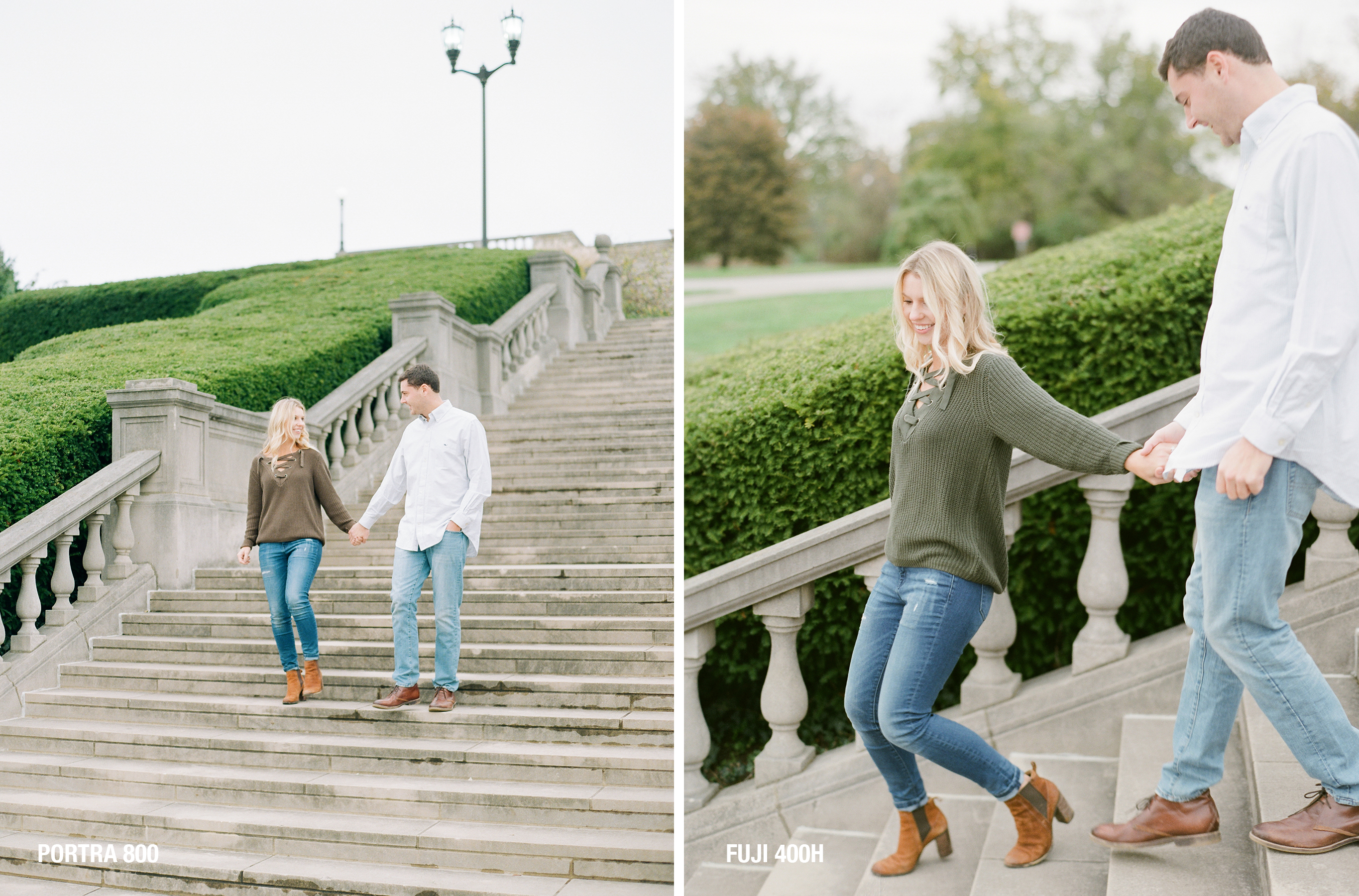
Jenna Nicole Photo | Portra 800 & Fuji 400H | Contax 645
Note: some clients prefer that all of their images match as closely as possible in color and others want each film stock to maintain its inherent characteristics. This applies to pushed and non-pushed rolls as well: some photographers would like the contrast level to match between pushed and non-pushed rolls, and others would like to maintain inherent contrast differences. Letting us know what your preferences are before scanning will help us deliver scans that are more to your liking.
Hybrid Shoots- In the example below, you can see the way film and digital rendered the color of the scene differently. The tablecloth came across as a gray tone on film, but in the digital edit, the tablecloth was more purple. Grays and lavenders often come across differently on film than they do on digital. Communicating the color beforehand in the notes section of your order form or sending us some digital images via email can help us add color in scanner to **better match your digital files.
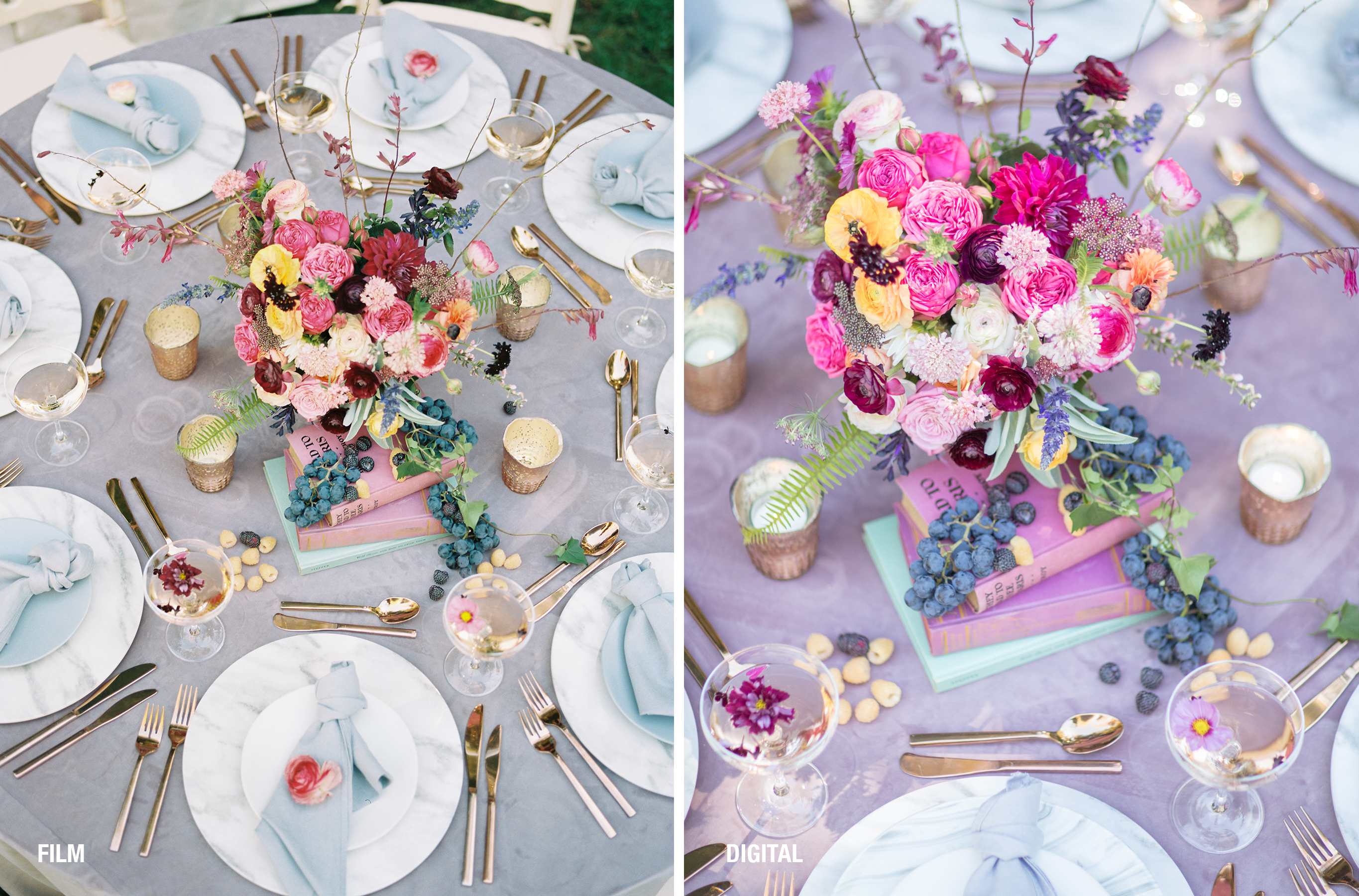
Rodeo & Co. Photography | Portra 400 | Hasselblad H2
In the example below, the dress looked cream on film because of the color reflection of the dirt beneath it and the film stocked used.
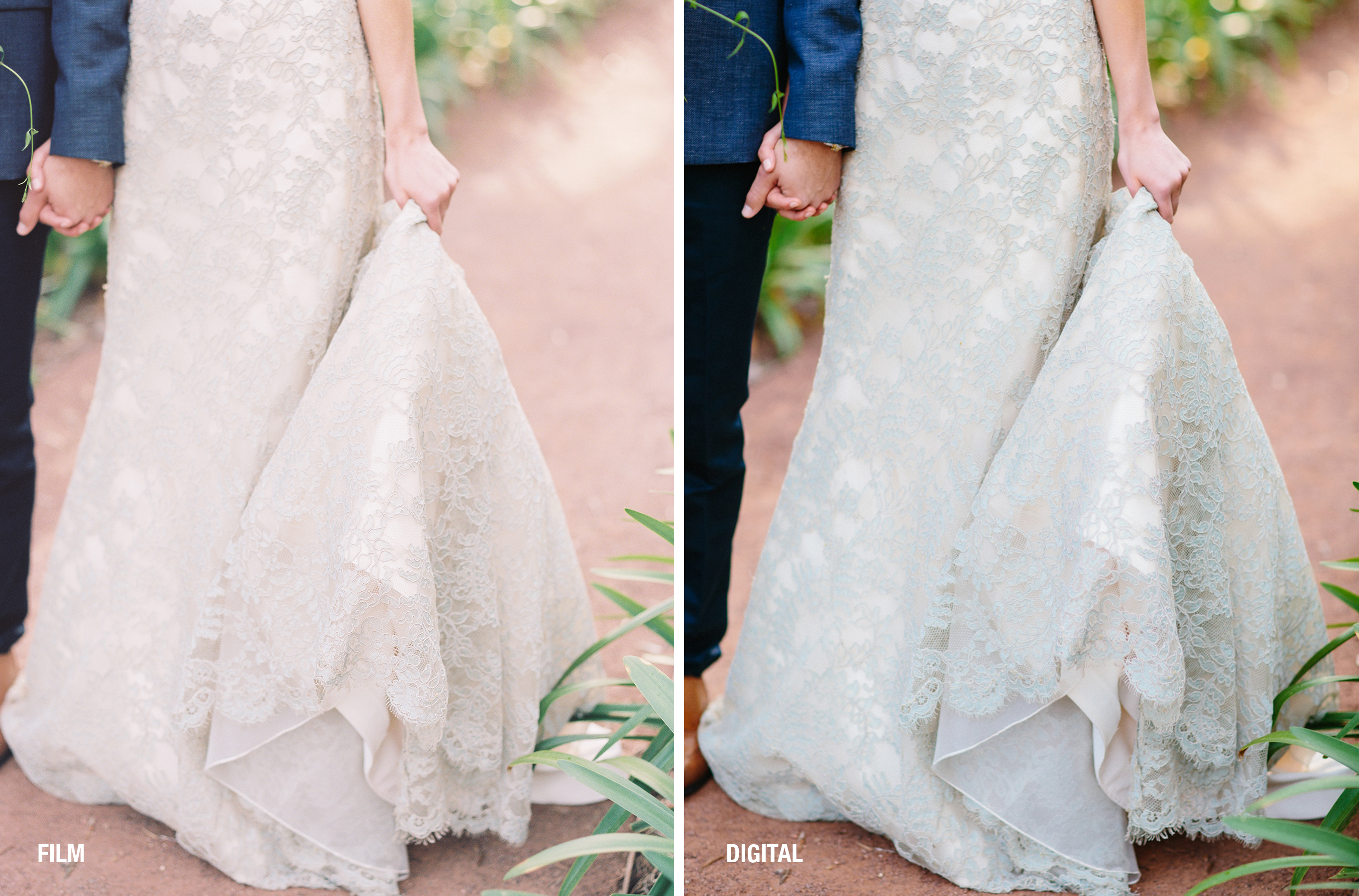
Shane and Lauren Photography | Portra 400 | Pentax 645
Wedding Colors- The photos below appeared on the same roll of film. In some photos, the suit looked black, and in others, the suit looked navy. This happens often on film because the base color combined with the lighting scenario can shift the colors in the image away from what they were in real life. We see these shifts often with bridesmaids dresses (i.e. were the dresses red, or maroon?) and wedding dresses (was the dress cream or white?). Communicating the colors of wedding party clothing beforehand will help us better match the color of your scans to the color you saw in real life.
*Because each film stock has its own unique color base, each film stock renders color differently. While we can add color in scanner to help match one film stock to another, two different film stocks will not always look completely alike. For best color matching, we recommend selecting our premium service.
**Keep in mind that film and digital are different mediums. While we can add color to your film files in scanner to help match your digital files, film renders color differently than digital does, so the color will not always match exactly.
